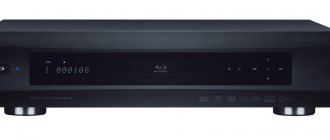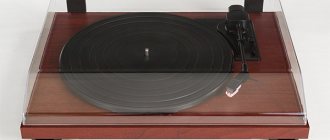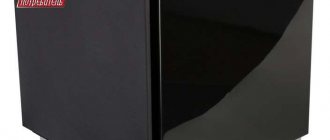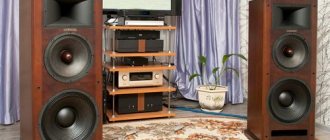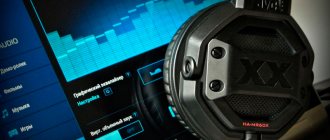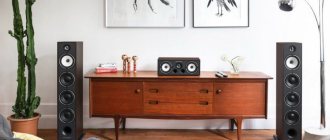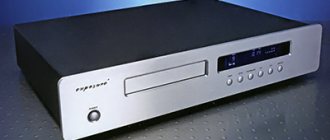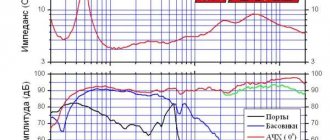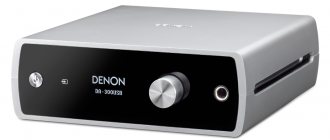| Marantz SM-7 |
232,000 Yen in 1979.
Marantz is one of the most respected companies in the history of the hi-fi industry. A company with a complex and periodically very bright destiny. Let's not forget that it was the founder of Marantz, Solo Marantz, who set the very highest levels of hi-fi technology in his New York garage.
Then there was a period of success and disappointment with Superscope. When those Model 2...10 were created. Which at this point in time are numismatic rarity and value.
Then the Philips period. Probably the lightest and brightest with thousands of sales around the world. A period of prosperity and wealth.
The Marantz SM-7 belongs exactly to the period, Philips. The amplifier is made according to a classic design and adheres to the highest hi-fi standards. And don’t let its relatively low cost fool you. If the Marantz SM-7 brand were independent, it would cost at least twice as much. And this is already the EXCLUSIVE level. But Philips should always cost more, and the American market was not willing to pay dearly for products made in Japan. And for us, as consumers, this is even beneficial. We also don’t want to pay dearly for good and very good things. We, only for genuine g...but, are ready to give everything and take out a loan! But that’s not what we’re talking about now. And about a truly very good thing called Marantz SM-7.
The secret to a successful power amplifier is simple. It is necessary to take a powerful transformer with enormous performance. With separate windings for each consumer, to eliminate any interference between channels. Install four high-speed capacitors with a capacity of 15000 µF each.
Make a push-pull rectifier, with high-frequency FT transistors in the power supply. Curb intermodulation distortion feedback, up to maximum power.
Use OFC copper conductors. Provide good protection against overloads and short circuits. Make the tone block switchable. Polish the aluminum of the front panel, install large dial indicators. And everything that turned out to be put away in a mahogany body.
That's it, Marantz SM-7 is ready!
The amplifier has a great analog sound!
100 Volts!
| Form | Amplifier |
| Rated power (20Hz~20kHz、2 channels simultaneous operation) | 150W+150W(8Ω) |
| Harmonic distortion (20Hz~20kHz、rated power) | 0.01% or less |
| Intermodulation distortion | 0.01% or less |
| Frequency response | DC~100kHz +0 -1dB |
| Input sensitivity/impedance | 1.5V/30kΩ |
| Damping coefficient | 100 or more(1kHz、8Ω) |
| SN ratio | 120dB |
| Power consumption | 400W |
| Nutrition | 100V, 50-60 Hz |
| Dimensions | W 474 × H 172 × D 345mm |
| Weight | 22kg |
Network player and DAC Marantz NA-11S1
Over its 60-year history, it has produced many interesting audio devices. Among them, a special place is occupied by CD and SACD sources, which are still produced and in demand among fans of the brand. But technological progress is inexorable, and such devices will most likely occupy a narrow niche for reproducing archaic media. But completely digital sources clearly have better prospects.
First, Marantz made the NA7004 Hi-Fi class network player. It had good features and sound in its price segment. But given the presence of a reference line of components, it would be surprising if the company refused to release a higher-end digital player. And this year the Marantz NA-11S1 Reference series network player was released. The release of completely digital players is quite a new activity for many companies. Therefore, they were in no hurry to put it on sale in order to make it a real rival for competitors. And, apart from some nuances, it worked out.
I had the opportunity to take a closer look at the NA-11S1. The player has an impressive appearance with a characteristic Marantze “reference” design. It weighs more than 14 kg, thanks to the massive chassis and 5mm top cover. This design provides excellent anti-resonance properties. This example was in golden champagne color, but there is also a black version. The front panel has a spectacular blue backlight, which can be dimmed or turned off completely. The impressive appearance is great, but I wanted the corresponding capabilities from the “reference” device. The Marantz NA-11S1 is a network player and DAC. Therefore, I began studying its capabilities with a network player, which is implemented on the basis of the SMSC DM860A multimedia processor. The network processor plays content from an external media server using the DLNA protocol over Ethernet, and also allows you to connect USB storage devices to the USB-A connector on the front panel. For fans of Apple gadgets, switching via USB and AirPlay is provided, which works wirelessly provided that the player itself is connected by wire to a Wi-Fi router. There is also an Internet radio with a large number of pre-installed radio stations, including Russian ones, as well as the ability to use Last.FM and Spotify services, although registration is required to work with them. You can also control the playback of content from a media server, USB storage devices and Internet radio from the remote control, based on the readings of the built-in display. At first this process may seem inconvenient, but gradually you get used to it and even feel some charm in it. And for fans of CD players, this solution may generally seem the most convenient.
The second and more technologically advanced way is to manage content through the Marantz Remote App client program. The program is available for iPod/iPhone, but installation on iPad with subsequent scaling of the interface is possible. Android is also supported, but due to the lack of Android gadgets I could not test it. Through Marantz Remote App you can access content on network storage and USB devices, as well as Internet radio. It is possible to switch built-in sound filters. But if you want to control it through a computer like a remote control, then we type the player’s IP address in the browser, and access to a significant part of the functionality will be provided. The web interface is simple in design, but its presence can be convenient for those who prefer to manage all settings from a computer. The software now began to be updated more often, and even at the end of the week-long test, the next time you turned it on, the player offered to install the latest software.
I would like to note that with the release of the NA-11S1, the Gapless mode was announced (playing album tracks without pauses), and in the latest firmware they also implemented rewinding within a track. True, to do this you will have to use the remote control and, while holding down the button to switch to the next track, monitor the time counter on the player’s display. It's not entirely convenient. Unfortunately, rewind control is not yet implemented in the Marantz Remote software. It was also noted that when launching content from a media server from a control program, it is impossible to intercept control from the remote control and, accordingly, it is impossible to control rewinding. But if you launch content from the remote control by selecting it on the player display, then rewinding from the remote control works. Unfortunately, rewinding did not work for ALAC files in this option either. It looks like the software needs further development. On the other hand, let there be such a rewind rather than no rewind, as in earlier versions of the firmware and in many competitors.
From network functionality we move on to studying the DAC. It is implemented on a chip from Texas Instruments DSD1792. The DAC receives signals both from the player’s network module and from the USB converter, which is built on the TMS320 chip. The DSD prefix is attached to the name of the 1792 chip for a reason. The groundwork has been made for the future. The USB-B input supports DSD 2.8 and 5.6 MHz, although only via DoP (DSD over PCM). To test DSD playback, I connected the player via USB to a computer with JRiver Media Center 18 installed, configured the DoP output, and during playback the player’s display showed DSD 2.8224 MHz. Test DSD recordings from the Norwegian site www.2L.no sounded impressive. Well, this functionality will certainly be appreciated by fans of rips from SACD discs, since there is still very, very little original DSD content. But it should be noted that the player’s DAC is designed not only for trendy digital formats. Devices are connected via coaxial S/PDIF and optical Toslink inputs, whose quality level can be significantly improved using the NA-11S1. Moreover, thanks to the special DSP filter DSP PEC777f3, it is possible to process the input signal from both the network module and USB drives. There are a couple of filters to choose from, a noise converter and a DC filter with a cutoff at 1.7 Hz. Although, as test listening shows, the most interesting effect was obtained when Filter 1 was used, which gave the most beautiful and rich sound.
The player also has digital outputs, i.e. it can become a transport itself. But to improve the sound of the built-in DAC, you will have to find a DAC that is significantly more expensive than the entire player. It’s easy to believe this when you look inside the device. A high-quality transformer with a copper housing and a power supply with separate channels for digital and analog sections. The internal space is filled as much as possible with boards. The analog circuit uses proprietary HDAM and HDAM-SA2 modules. For maximum sound quality, there is no volume control in the path. High-quality XLR and RCA connectors were used. A very high standard of production of all components is clearly visible. And in this case, the appearance and quality of performance fully correspond to the sound. High-resolution sound with precise tonal balance, rich and well-articulated bass. High-bitrate HD content produces stunning aftertaste. But at the same time, the sound has a certain refined softness, a kind of signature style, which gives that very pleasant comfort, for which many fans of good sound choose sources from Marantz. Now you can safely switch to a completely digital device - the sound of the NA-11S1 satisfies all the highest audiophile requirements.
Price: P158,000
A COMMENT
The measured parameters are even better than those declared by the manufacturer and correspond to a very high sound class. High detail during hearing testing is confirmed by instrumental measurements. This once again proves that Marantz engineers have done a lot of work to create an all-digital player that can replace top-level CD/SACD players.
Based on materials from the publication Stereo&Video Author Vladimir Sedov

